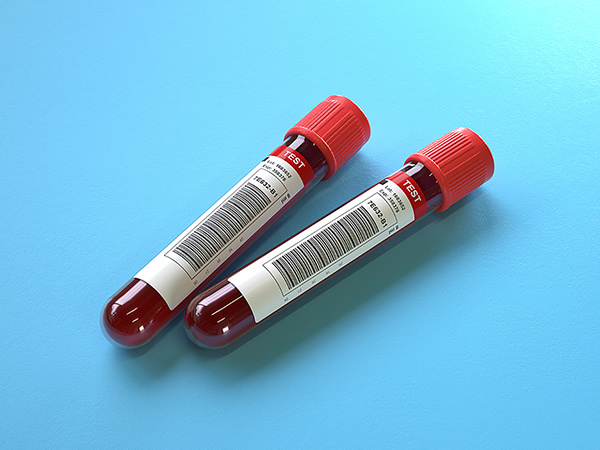How Liquid Biopsies Can Complement Tissue Biopsies
With the August 2020 U.S. Food and Drug Administration approvals of the Guardant 360 CDx and FoundationOne Liquid CDx liquid biopsy tests to detect genetic abnormalities over multiple tumor types, the use of liquid biopsies in clinical settings continues to be a promising area of development with growing applications.
But it’s unlikely that liquid biopsy will be edging out traditional tissue biopsies, notes an article published in the winter 2020-2021 issue of Cancer Today, which is a magazine for cancer patients, survivors, and caregivers published by the American Association for Cancer Research. Tissue biopsies remain the gold standard for analyzing the extent and nature of cancer. Still, clinicians are seeing the benefits of liquid biopsies in providing additional important information about tumors, the article explains.

In clinical practice, liquid biopsies are most often used to evaluate patients with advanced cancer to determine whether they might be candidates for targeted treatments or to better understand their prognosis, said Bert Vogelstein, MD, FAACR, a researcher and cancer geneticist at the Johns Hopkins Kimmel Cancer Center in Baltimore, who was quoted in the article. That’s because patients with cancer that has spread to another part of the body are more likely to have genetic alterations present in their bloodstream. In addition, in some cases where accessing tumor tissue is too difficult or samples aren’t sufficient, a liquid biopsy may be the only way to get the genetic information.
“In general, if there is tissue available, it’s preferable to look at tissue to identify genetic alterations rather than looking in the plasma,” said Vogelstein. He notes that important genetic alterations in a tumor sample are usually present in 100 percent of cancer cells, but those alterations are present at low concentrations in blood samples—especially in patients with early disease. “Sometimes, it’s not present at detectable levels at all,” Vogelstein says.
Charu Aggarwal, MD, MPH, a medical oncologist specializing in head and neck cancer and lung cancer at the Hospital of the University of Pennsylvania in Philadelphia, sees tissue and liquid biopsies as complementary. As an author of the February 2019 study published in JAMA Oncology that suggests using both liquid and tissue biopsies together could improve the ability to detect important genetic alterations in people with stage 4 non-small cell lung cancer, Aggarwal doesn’t see a reason to have to choose.
“Liquid and tissue biopsy both have pros and cons. In our clinic, we actually use both,” she says. “Tissue biopsy remains the gold standard. But we often find the turnaround time [for tissue biopsy] is much longer. Everyone is anxious to get started on the right treatment. Patients don’t want to wait for two to three weeks, during which time they may progress or develop more symptoms.” By comparison, liquid biopsy results often take a week or two.
Seeing the Big Picture
Physicians at Moores Cancer Center at the University of California, San Diego have been using liquid biopsies extensively for about five years for almost every type of advanced cancer, says Razelle Kurzrock, MD, a researcher and medical oncologist who is the director of the Center for Personalized Cancer Therapy.
“It’s much easier to get a blood sample than tissue,” Kurzrock says. She notes that liquid biopsy tests are not as comprehensive as tissue tests at this point in time, but liquid biopsies still have the potential to capture useful and unique information about advanced cancers.
“When there are metastases, there can be heterogeneity,” she says. “There will be overlap, but there may be differences as well because tumors evolve. When you do a biopsy of the liver, you only know what’s in that piece of liver. When you do liquid, you get DNA shed from multiple sites. You may get a bigger picture of what’s going on.”
For these reasons, liquid and tissue biopsy results can differ, but Kurzrock believes this variability is a strength since liquid biopsies can expand the view to all cancer in the body instead of the cancer at one site. Liquid biopsies also open the door to other possibilities, including the ability to do a series of blood draws over time to monitor a cancer’s response to treatment or to pick up on emerging treatment resistance as new genetic alterations arise.
Kurzrock typically orders liquid biopsy tests for patients when there is a suspicious area on a scan that may indicate a relapse but is either too small or too hard to reach for a tissue biopsy. “We’ve seen sometimes that new resistant alterations emerge months before we see a change on a CT scan,” Kurzrock says. “It’s a glimpse into what will happen in the future.”
Unanswered Questions
“If liquid biopsies can help find targetable mutations, they have a lot of potential, so many people including myself have adopted them” for use in patients with metastatic disease, says Daniel Catenacci, MD, a gastrointestinal medical oncologist at the University of Chicago Medicine. “On the other hand, if you are looking at stage 2 or 3 cancers where cure is more likely, the stakes are higher. If you get it wrong, you could do significant harm.”
While many oncologists and researchers are optimistic about the promise of liquid biopsies in general, Vogelstein says, much of the science is still early. In fact, Vogelstein is involved in the development of a liquid biopsy test called CancerSEEK that he hopes will one day detect cancers earlier when they are more treatable. But at this point, he says, the benefits of liquid biopsies as a screening tool or to guide treatment in most cases are “more of a hope than something that has been rigorously demonstrated [in the clinic].”
For now, decisions about whether and when to order one of the available liquid biopsy tests will have to be made by doctors and patients together, Vogelstein says. Health insurance may or may not cover their cost. (However, many of the companies offering the tests provide financial assistance for those who need help to reduce out-of-pocket costs.)
This article was excerpted from Cancer Today, a magazine and online resource for cancer patients, survivors, and caregivers that is published by the American Association for Cancer Research.



